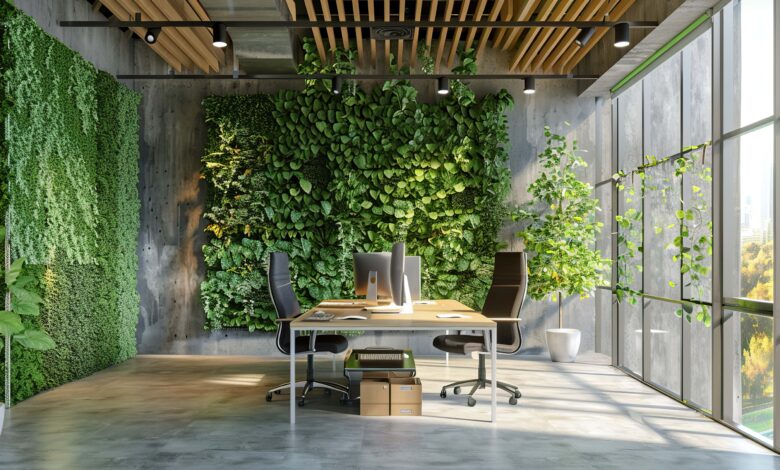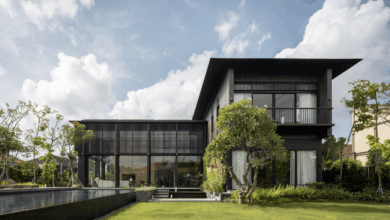Biophilic Design: How Nature-Inspired Spaces Improve Health and Productivity

Amidst a sea of screens, concrete, and artificial light, we are disconnecting from the world naturally. But our health is based largely on staying connected. That’s where biophilic design enters the picture, a method that reconnects nature to the places where we live and work. It’s not beauty, though it’s lovely; it’s designing spaces that encourage health, creativity, and productivity.
What Is Biophilic Design?
The word biophilia comes from the word “love of life,” and it is our innate inclination to be connected with nature. Biophilic design applies this concept in the means of architecture and interior design through the use of natural light, plants, water, and natural materials. The aim is to have the building “alive” and in harmony with nature.
Instead of sterile, chilly offices or rigid apartments, biophilic spaces introduce such things as indoor plants, wood finishes, running water, and natural light. These things have a calming effect, relaxing the stress element while promoting concentration and overall health.

The Science Behind Nature and Well-Being
Experiments show that nature spaces provide measurable health and performance benefits. University of Exeter research found that office employees with plants were 15% more productive than those without plants. Daylight exposure improves mood, coordinates sleep, and enhances mental sharpness.
Natural materials and patterns induce positive emotional response — lowering stress hormones, stabilizing heart rate, and even improving memory. When people feel better, they work better, and that translates into better performance.
Biophilic Design in Modern Offices
In the post-pandemic world, wellness-focused design has become an imperative. multinational companies such as Google, Amazon, and Microsoft are introducing biophilic design to reshape offices — adding indoor gardens, living walls, and huge glass panels that bring in lots of daylight.
These offices not only look beautiful; they make individuals talk more effectively and are more creative. Biophilic spaces that were designed generated 6% greater productivity and 15% greater worker creativity based on the Human Spaces Global Report. It is certain that individuals function better when nature is integrated into their surroundings on a regular basis.

Principles of Biophilic Spaces
Creating a successful biophilic environment is more than simply adding some plants on a shelf. It’s creating an environment that addresses all of the senses. Some of the easy strategies are:
- Natural Light & Ventilation: Utilize daylight and air movement to simulate external conditions.
- Organic Materials: Add wood, stone, and natural texture for touch and warmth.
- Green Features: Add living walls, roof gardens, or courtyard landscape.
- Water & Sound: Add calming water sounds or nature soundscape to relax.
- Natural Forms: Add curves, patterns, and formation of nature geometry.
These together bring balance — which enhances mental acuity, vibrancy, and emotional health.

The Future of Biophilic Architecture
As sustainability becomes the focus of architecture, biophilic design goes from niche idea to mainstream standard. WELL and LEED building certifications now include wellness-focused design as a part of green building codes. Developers and CEO personalities are realizing that spaces prioritizing people and nature, not just healthier — they are more successful and sustainable.
In the not-so-distant future, AI and smart sensors will aid in managing natural light, temperature, and air quality, such that buildings actually respond to human needs and cycles of nature.
Conclusion
Biophilic design is more than just a design trend, but it’s returning to our origins. Blending nature into architecture can enable us to design spaces that heal, inspire, and empower.
As the planet becomes increasingly urbanized, re-imagining human connection to the natural world through intelligent design will be central to the creation of healthier, happier, and more productive lives




